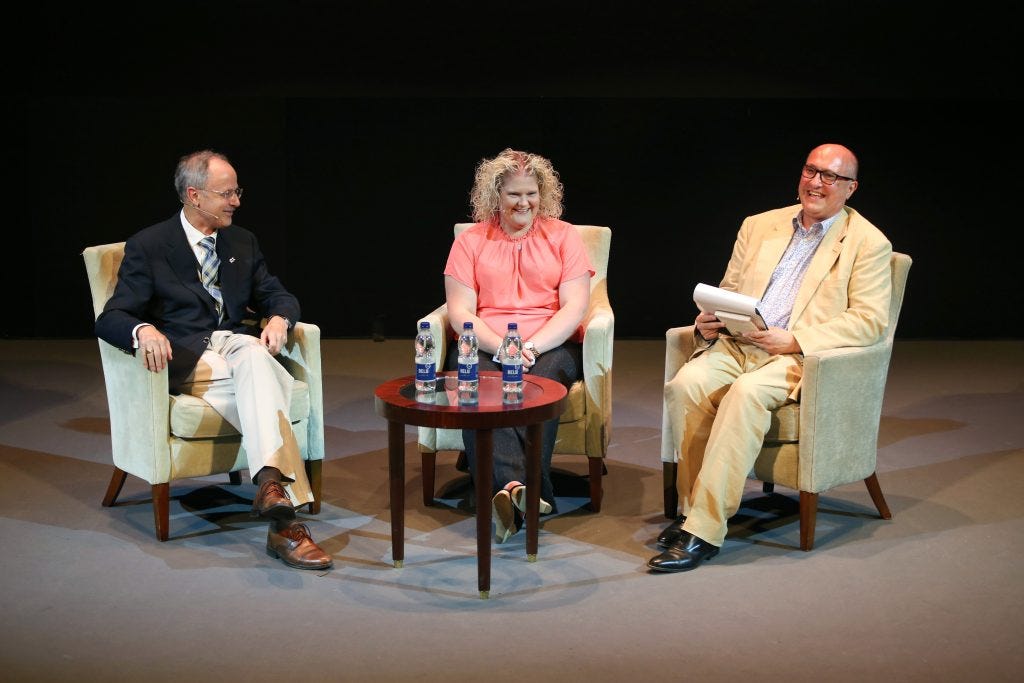The United States was primed for controversy over IVF treatment after the overturning of Roe v. Wade by the Supreme Court two years ago. Their ruling gave new agency to people who believe fertilized eggs are children and insist on full human rights from conception.
My wife and I have been close observers of IVF from before its inception. I started my career with the pioneer Robert Edwards at Cambridge, England; my wife was the embryologist for America’s first IVF baby in Norfolk, Virginia. I watched as Bob and his clinical colleague Patrick Steptoe came under immense pressure in the struggle to develop a novel technology for patients with infertility. Some authorities in politics, theology, and science, even in medicine, accused them of recklessly playing God with the genesis of life and portrayed them as Doctors Frankenstein who would create monstrous outcomes.
But the critics fell abruptly silent on the morning of Louise’s delivery, ending her parents’ decade-long quest to start a family. No one with a heart can declare a bonny baby should never have been born, although some did and still do, at least in private.
I remember that day with fellow biologists and doctors attending a conference in Cambridge. We expected an announcement imminently, but the date was top-secret to avoid the hospital ward being invaded by eager newspaper reporters camping outside. The conference rippled with news from attendees who heard it on the radio or bought a morning newspaper headlined “The Baby of the Century.”
The Browns became the reluctant focus of international curiosity and never managed to return to their former anonymous lives. Newspaper reporters at their front door and telephoto lenses across the street invaded their privacy. The parents only wanted to raise their children the same as suburban neighbors. They tried fending off unwanted attention by engaging more respectful agents. Peter Williams made an ITV documentary about their domestic life, and a couple of years later he made another film for NOVA at WBGH about the first baby in America.
The floodgates opened after these births for the surging demands of countless thousands of people who had quietly lived with the grief of a childless home. The early waves of patients going to Bourn Hall and the other private clinics springing up took precautions to avoid the notice of the rude press, some incognito and paying in cash to avoid leaving an identifying signature. Many even kept treatment secret at home to avoid their children being jeered on the school playground as “test-tube babies” or with other dehumanizing monikers.
How different the world of IVF is today. The stigma of infertility has melted away since 12 million IVF babies have been born. When Costa Rica canceled its ban on treatment, it removed the last holdout in the world. Today, two out of every hundred babies are conceived by assisted reproductive technologies in the USA, and twice that frequency in some countries.
Parliaments have enacted laws to safeguard clinical practice, in contrast to America where the lack of federal legislation is creating a brouhaha spilling into the political arena in a Presidential election year. Another sign of approval is the offer from major companies to pay for egg freezing as a benefit for retaining highly valued staff. IVF has entered popular culture through books, magazines, movies and the theater. Parents talk openly about successful battles with infertility to guests at barbecues and parties. Even its stubbornest critics don’t claim that fertility medicine creates children different from those conceived in nature’s wild way. Not infrequently, students linger after my endocrinology class to say they were IVF babies. I tell them: “So that’s why you’re so smart!” Although meant as a joke, there is some foundation, probably for socio-economic reasons.
Surveys confirm the approval of IVF by the great majority of the population. Its advocates no longer need to campaign for it, except in America which risks getting out of step. They focus on patient access, information, and how to cope with the stress of treatment and grief when it fails. Organizers of conferences and patient support groups make a scoop if Louise comes as a keynote speaker. She is an audience magnet who feels a responsibility to reassure them and tell her story, done with impressive grace. The last time I saw her we shared a platform on her 40th birthday that drew a crowd at London’s Science Museum (pictured above with Director Dr. Roger Highfield).
Most celebrities acquire fame through a combination of personal excellence and lucky breaks. Fewer stars are born famous, like royalty and Louise. She would laugh modestly at the association.
Many patrons of charitable causes in Britain are recruited from the Royal Family, like The Princess Anne, whereas in America they are often glamorous stars, like Barbara Streisand. Louise doesn’t fit either type. Born to hard-working parents, she had an ordinary education and employment before she married and had two children, both conceived naturally. Her history is similar to most other people, and yet, she is extraordinary for at least two reasons. She can never be replaced as the first person in history to be conceived outside her mother’s womb. And the second reason is that her life and modest manner have normalized a technology that was derided as abnormal before it succeeded with her.





